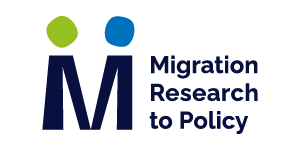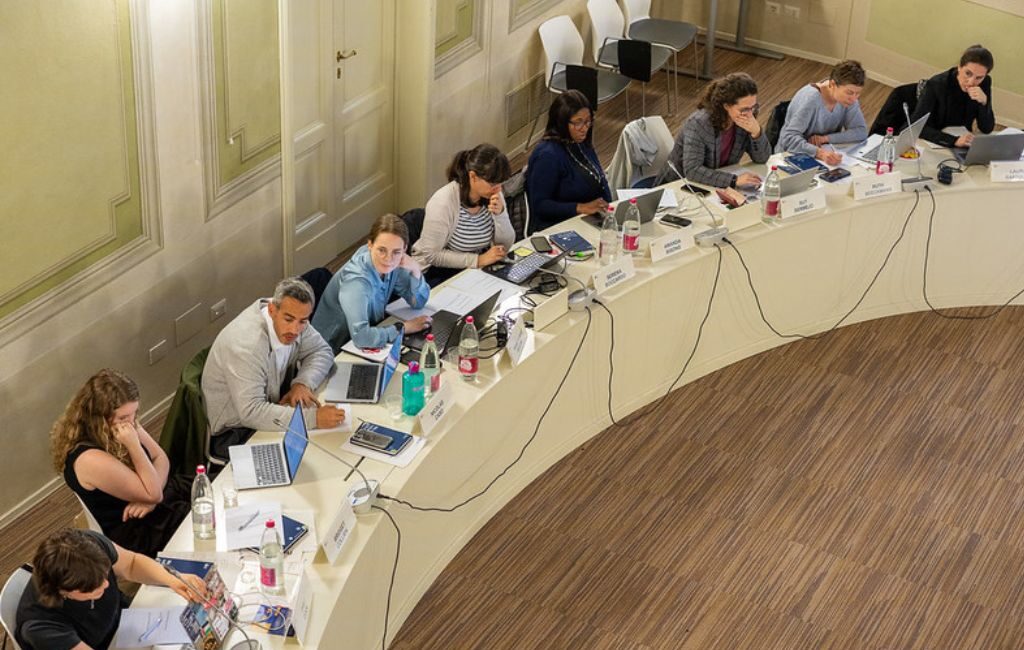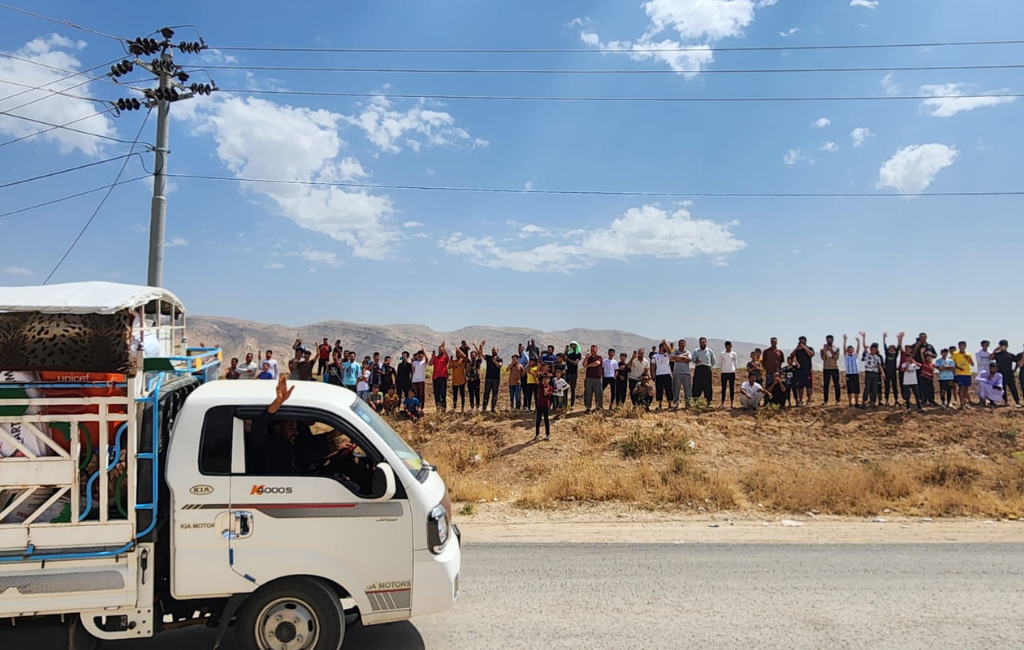
Engagement hub
Want a method to engage policymakers? Consider monitoring
When it comes to influencing migration and integration policies, legal arguments and reports can only go so far. Policymakers are often drawn to approaches that provide tangible, actionable insights. This is where monitoring—a structured, evidence-based approach to assessing policies—can make a difference. By showing what works, where gaps exist, and how practices compare across countries, monitoring can move beyond theoretical debate and spark practical, impactful policy dialogue.
Drawing from the Migration Policy Group’s (MPG) extensive experience, this short provides practical advice for researchers on how to integrate monitoring into their work and maximise its impact
What is monitoring?
Monitoring involves the continuous assessment of policies using indicators to evaluate progress and inform decision-making. MPG has long used monitoring as a tool to support migrant integration through projects like the Migrant Integration Policy Index (MIPEX) and the National Integration Evaluation Mechanism (NIEM) to measure integration policies across regions and countries.
- MIPEX: measures policies to integrate migrants in 56 countries, offering comprehensive, regularly updated resources for longitudinal analyses and cross-country comparisons. Policymakers have used MIPEX to benchmark progress and identify areas for reform.
- NIEM: focused on improving the conditions for beneficiaries of international protection in 14 EU countries. It provides a standardised research tool for evaluating the existing legal frameworks, public policies, and the scope and methods of their implementation.
As a data-driven approach, monitoring allows policymakers to pinpoint gaps, identify best practices, and inspire change. In addition, it can mobilise other policy stakeholders – such as civil society organisations – to advocate for better policy outcomes. However, the impact of monitoring research hinges on how well and strategically researchers engage with policymakers.
Why is monitoring an interest to policymakers?
Monitoring resonates with policymakers who are grappling with migrant inclusion because it taps into their genuine interest in identifying policies that work well. Addressing this interest is the ‘hook’ which gets policymakers’ attention about good practices found in other places and creates awareness about the weaknesses of their own approach.
For example, in 2021, MIPEX data revealed Switzerland’s relatively low ranking in migrants’ access to democratic rights and was used in a government report to address discriminatory practices. In 2022, a report of the Finnish Government used MIPEX findings to argue for reform of integration policies. In Portugal, the High Commission for Migration regularly leveraged MIPEX results to assess policy development. These cases demonstrate that monitoring can both inform policymakers and challenge them to take action, provided the data is presented strategically and respectfully.
Four ways that you can structure and use monitoring in your next research project:
- Make Monitoring Comparative for Maximum Policy Impact
Comparative monitoring, whether across countries, regions, or cities, adds tremendous value for policymakers. This approach shows not just the current state of integration but highlights successful models that can inspire action. Tools like MIPEX and NIEM facilitate cross-border comparisons, allowing policymakers to identify benchmarks and set standards based on evidence of what works. By using a universal framework grounded in best practices and international legal standards, comparative monitoring provides a neutral reference point for policy debates, offering both inspiration and identifying areas needing improvement. - Foster Collaboration in Research and Engagement
Engagement with policymakers is most effective when the research itself is collaborative. Cross-country monitoring relies on the insights and local expertise of research partners familiar with specific contexts. These partners not only apply standardised indicators but also provide feedback that refines monitoring instruments. Once the research is complete, launching comparative reports or country-specific results should be collaborative, relying on local partners’ outreach skills. To achieve greater visibility and impact, communications around the findings need to be carefully planned, with the launch serving as a key moment to engage policymakers and stakeholders. - Use Monitoring as a Foundation for Sustained Policy Dialogue
The results from regular monitoring should serve as the starting point for ongoing policy discussions. Displaying differences across policy areas will naturally lead to debates about gaps, deficiencies, and progress. Comparative scores can prompt a lively exchange about achievable outcomes and inspire debate over adapting best practices to local contexts. Moreover, presenting results that highlight both leaders and laggards can be an opportunity to raise awareness or, when necessary, challenge policymakers to take action. - Integrate Engagement into Project Designs
Effective engagement requires more than a report release; it demands time and resources. Projects should allocate significant resources to policy dialogue and advocacy. For example, the NIEM project dedicated nearly half of its resources to engagement, enabling extensive policy discussions and the production of country-specific reports. Sustained engagement over several years, like NIEM’s three rounds of monitoring, allows for follow-ups that can significantly impact policy debates and lead to meaningful changes.
- Make Monitoring Comparative for Maximum Policy Impact
Ready to get started?
So, if you’re considering an approach that uses monitoring, remember these three things:
- Design it Comparatively: Make your monitoring research comparative, as it adds value by providing benchmarks and identifying best practices for policymakers.
- Collaborate Widely: Partner with local researchers for both the monitoring process and the dissemination of results to maximize the outreach and relevance of your findings.
- Sustain Engagement: Use monitoring results as a basis for ongoing dialogue with policymakers, integrating regular follow-ups to ensure that your research drives real policy impact.
By adopting these strategies, researchers can enhance their engagement with policymakers, ensuring that their monitoring efforts have a tangible impact on migrant integration policies.
Learn more:
Monitoring examples:
- MIPEX is published online, with an update of all 27 EU member states in 2025.
- NIEM reports from 2019, 2020 and 2022.
- The Regions for Migrants & Refugees Integration (REGIN) project developed a monitoring system at regional level, including a MIPEX-R self-assessment tool for policymakers.
- The WholeComm project assessed existing policy indices and produced a toolbox on local-level integration policies based on indicators.
Alexander Wolffhardt is MPG’s Deputy Director and has worked as an integration policy analyst on the development, realisation and dissemination of indicator-based monitoring instruments at local, regional and national levels, including the National Integration Evaluation Mechanism on refugee integration.
Submit your idea for a ‘short’ to be featured on the Co-Lab.












